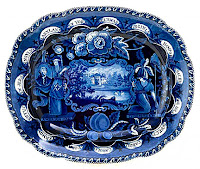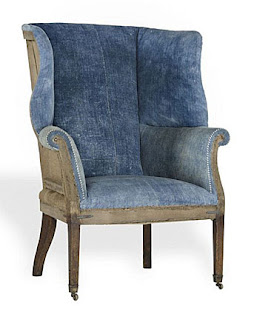 QUESTION: We’ve had a Windsor chair in our family as far back as I can remember. I believe it belonged to my great-great grandmother. Today, I use it as a chair at my computer desk. What can you tell me about this chair?
QUESTION: We’ve had a Windsor chair in our family as far back as I can remember. I believe it belonged to my great-great grandmother. Today, I use it as a chair at my computer desk. What can you tell me about this chair?
ANSWER: You have a standard bow-back Windsor chair, the kind found in just about every upper class household in Colonial America. While most people consider them delicate antiques, they’re quite sturdy and have many uses.
One of the most graceful and usable of all traditional chairs, the Windsor is also the most successful piece of furniture in American history. Its origins, however, are English, dating back to the turned and joined stools of 16th-Century England. The name probably derives from Windsor, where a prolific chairmaker produced and sold the chairs in the 18th Century. He sent them down the Thames River to London where people referred to them as coming "up from Windsor."
 Wheelwrights rather than cabinetmakers made Windsor chairs in England. They remained farmhouse or tavern furniture for a long time. But here in America, homeowners embraced the Windsor as a sort of all-around chair. They could be stored in a hallway and brought into any room that needed more seating when guests arrived. They could be easily carried. And they could be brought outdoors to provide seating on the lawn on hot summer days. Even the most prominent members of Colonial communities used them. George Washington seated his guests on the East portico of Mount Vernon in 30 Windsor chairs.
Wheelwrights rather than cabinetmakers made Windsor chairs in England. They remained farmhouse or tavern furniture for a long time. But here in America, homeowners embraced the Windsor as a sort of all-around chair. They could be stored in a hallway and brought into any room that needed more seating when guests arrived. They could be easily carried. And they could be brought outdoors to provide seating on the lawn on hot summer days. Even the most prominent members of Colonial communities used them. George Washington seated his guests on the East portico of Mount Vernon in 30 Windsor chairs.
As a piece of furniture, the Windsor holds historical significance. Thomas Jefferson sat in a bow-back. writing-arm Windsor while composing the first draft of the Declaration of Independence in late June of 1776. And when Benjamin Franklin and other members of the Continental Congress voted to secede from the mother country on , July 1, 1776 in Independence Hall, they sat in bow-back Windsors.
 There are eight different kinds of American Windsors, including the low-back, or Philadelphia Windsor, named for the city where a craftsman constructed the first Windsor in the colonies, the comb-back, fan-back, bow-back, loop-back, arch-back or New England armchair, rod-back, and arrow-back. Each had its distinct use. Windsor makers socketed all parts together except for the shaped arms of the fan-back, arrow-back, and rod-back chairs. On these, they doweled the inner ends of the arms or screwed them to the back uprights.
There are eight different kinds of American Windsors, including the low-back, or Philadelphia Windsor, named for the city where a craftsman constructed the first Windsor in the colonies, the comb-back, fan-back, bow-back, loop-back, arch-back or New England armchair, rod-back, and arrow-back. Each had its distinct use. Windsor makers socketed all parts together except for the shaped arms of the fan-back, arrow-back, and rod-back chairs. On these, they doweled the inner ends of the arms or screwed them to the back uprights.
Windsor makers preferred pine, whitewood, and basswood for seats, hickory or ash for spindles, maple. yellow birch, or beech for turned legs. stretchers, and supports, and hickory, oak, ash, or beech for hoops. bows, or combs. And because of this, makers gave their Windsors several coats of dark green paint. In the 19th century, small factory workshops produced Windsors of pine and maple. And even to this day, craftsmen still use the same time-tested techniques for constructing reproduction Windsors.
 Most people are familiar with the low-back, barrel-shaped chairs used from the mid 19th to the early 20th century. These were actually descendants of the earliest low-back Windsor chairs made in America. However, these don’t usually appear in historical house museums from the Colonial period. Made from 1725 to1760, this Philadelphia style chair had blunt-arrow legs—turned legs with a cylindrical lower section and ball.
Most people are familiar with the low-back, barrel-shaped chairs used from the mid 19th to the early 20th century. These were actually descendants of the earliest low-back Windsor chairs made in America. However, these don’t usually appear in historical house museums from the Colonial period. Made from 1725 to1760, this Philadelphia style chair had blunt-arrow legs—turned legs with a cylindrical lower section and ball.
The comb back was the second type of Windsor chair made in the Colonies. The crest rail with its spindles resembled a wide-toothed comb, hence the name. In both England and America, the Windsor became known as the stick chair. The wide saddle seat is half round with a straight front. The deeply curved one-piece arm terminates in knuckled-curved ends and is supported at front by baluster-turned uprights. The back is formed of nine bulbous spindles that pass through the arms and extend upward into a wide comb with volute ends.
Fan-backs had tall spindles flanked by stiles and came in both armchair and side chair styles.
 Legend says that an archer’s bow influenced the design of the bow back Windsor. Realistically, it probably evolved from the comb back. Also known as the hoop-back or sack-back, this Windsor was the most commonly used in America and England from 1740 to 1800 because of its elliptical seat and seven tapered spindles that pierce a semi-circular arm rail and bowed top rail.
Legend says that an archer’s bow influenced the design of the bow back Windsor. Realistically, it probably evolved from the comb back. Also known as the hoop-back or sack-back, this Windsor was the most commonly used in America and England from 1740 to 1800 because of its elliptical seat and seven tapered spindles that pierce a semi-circular arm rail and bowed top rail.
 During the 19th century, the Windsor chair had become more decorative, including those with arrow-shaped splats and paint-decorated
During the 19th century, the Windsor chair had become more decorative, including those with arrow-shaped splats and paint-decorated
To read more articles on antiques, please visit the Antiques Articles section of my Web site. And to stay up to the minute on antiques and collectibles, please join the over 30,000 readers by following my free online magazine, #TheAntiquesAlmanac. Learn more about old-time winter objects in the 2022/2023 Winter Holiday Edition, with the theme "Winter Memories," online now. And to read daily posts about unique objects from the past and their histories, like the #Antiques and More Collection on Facebook.













































